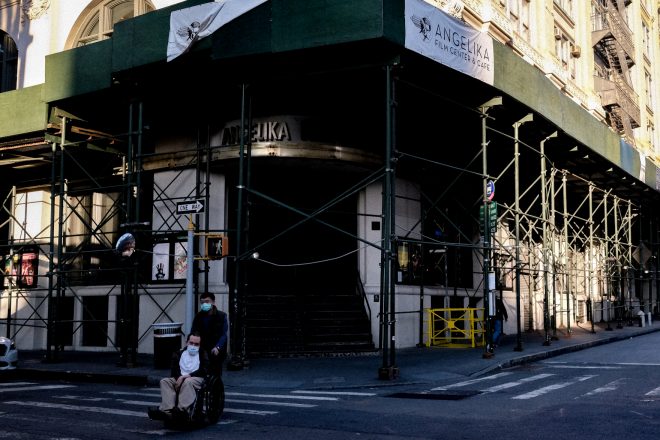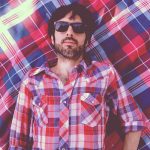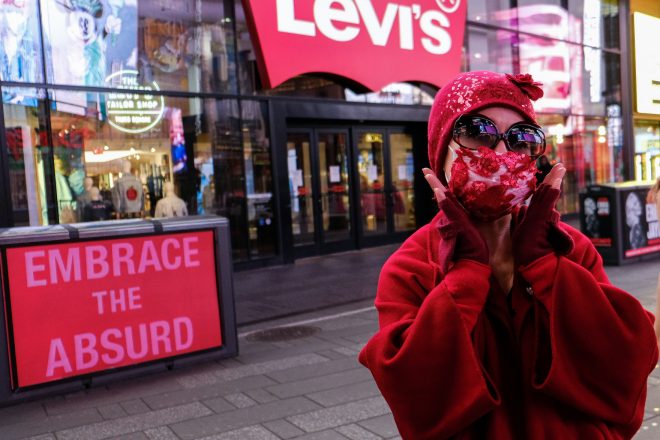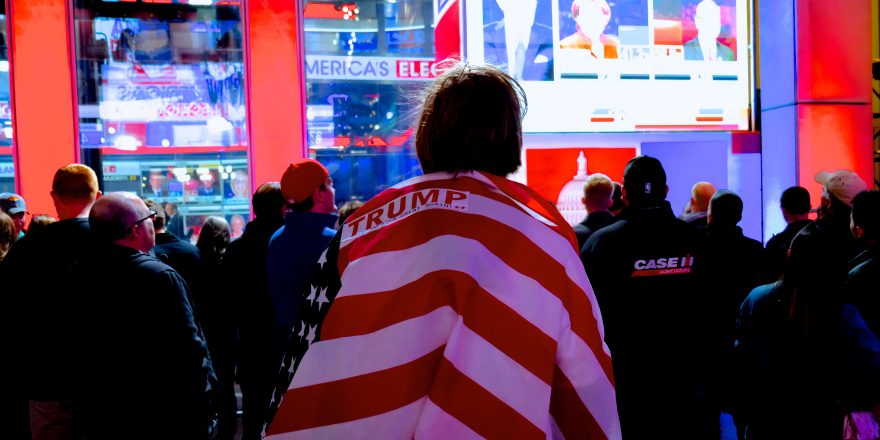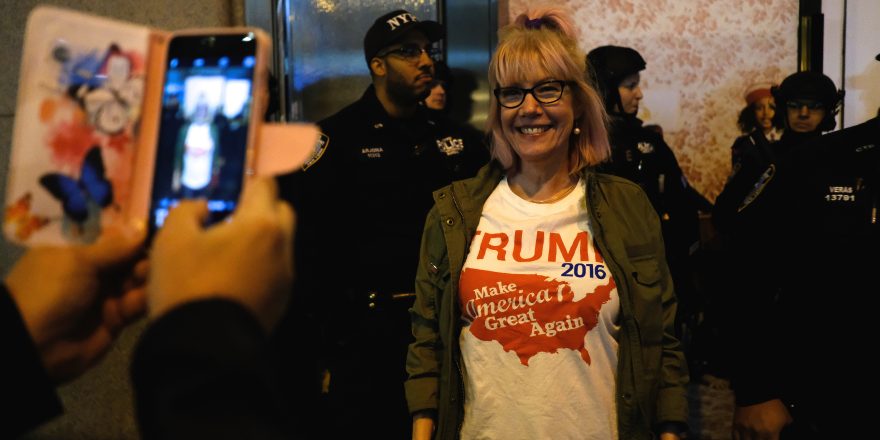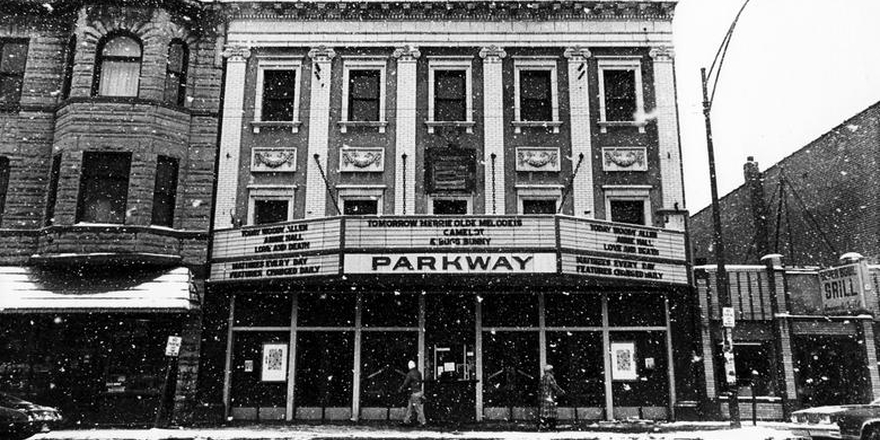I can trace my decision to live my life as a New Yorker back to a night in the fall of 1994 when my buddy Phil and I, on the recommendation of the Village Voice, left our dorm in Central Jersey and drove an hour into the city to see a movie that was set entirely in a convenience store in Central Jersey: Clerks.
As we sat in the back row of the narrow Angelika Film Center, we howled with laughter at the depiction of a world that was so specific and familiar to us, but which we had never before seen captured on film. It was one of those magical nights that you have in your late teens/early twenties that leaves you feeling electric with possibility, like there’s a dream to chase and a place where you can go to get closer to it.
The next year, in the hopes of impressing a sophomore minoring in French, I followed the Voice’s advice again and brought her to see La Haine at the Loews on 3rd Ave. and 11th Street. I was mesmerized by the intense visuals, and director Mathieu Kassovitz’s depiction of the social struggles a group of guys my own age were going through in Paris compelled me to seek out the world through watching films.
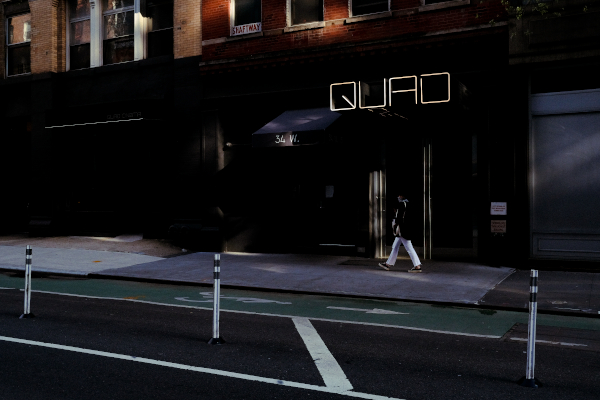
At the Quad, I saw my first Renoir, Grand Illusion, and in the bathroom afterward another guy, around my height, approached the urinal beside mine. As I washed my hands and the guy approached the sink to my right, I realized why out of my peripheral vision he’d seemed familiar. It was Lou Reed. I was so starstruck to have pissed next to a hero, that I absentmindedly grabbed a huge stack of paper towels out of the dispenser on the wall. I was standing there with a huge wet wad in my hands as Lou turned off his faucet, glanced at me in the mirror and as he shook his head, deadpanned, “What do you have against trees?” before drying his hands on the sides of his black jeans and heading for the door.
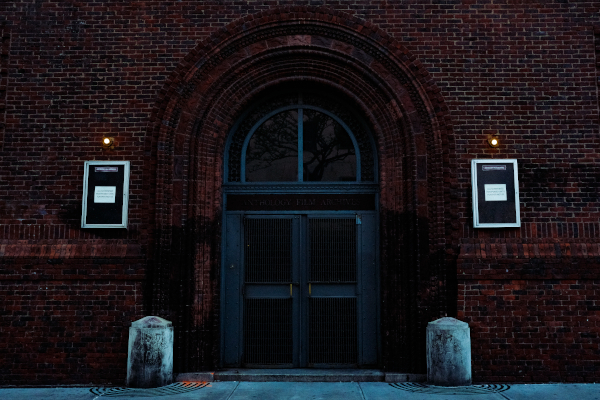
When I finally found an affordable apartment in the East Village in February 2001, I became a regular at Mondo Kim’s on St. Mark’s. I’d ask for Frederick Wiseman films and was told, “We can’t put that stuff out on the floor because we’d get in trouble, but there’s a manager here who has a bunch of them on VHS and he will loan them to you.” That manager turned out to be the tall guy with a beard I’d seen modeling in a spread celebrating men with long hair in a copy of Jane magazine on my girlfriend’s nightstand, Sean Price Williams. We became friends after I loaned him a copy of a Fassbinder book, and at the time he kept a daily planner he’d update anytime a rep house released a new calendar, scheduling his life months in advance with movies he’d planned to see in the theater. I couldn’t keep up with Sean and the other Kim’s guys, but when I did it was seeing stuff like Béla Tarr’s Werckmeister Harmonies or Jerzy Skolimowski’s Deep End at Anthology Film Archives, or the Nicholas Ray retrospective at the temporary MoMA theater on 23rd Street while the museum underwent a renovation.
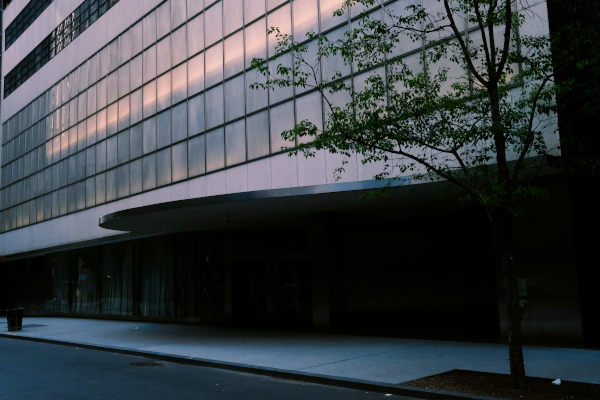
In the days after 9/11, there was a rumor going around that because all traffic south of 14th street was suspended, the Regal Union Square was offering free movie tickets. I reconnected with a musician I’d dated and been very close with, Alley Deheza, who would later go on to an acclaimed musical career as co-founder of the band School of Seven Bells, and as we stood in the lobby scanning the movies and showtimes available, the option that was most appealing to us was Rush Hour 2. As it turned out, not only were the tickets free, but so were sodas and popcorn. The energetic comedy of Jackie Chan and Chris Tucker was what the shell-shocked New York audience needed, and despite the fact that the city was literally burning a few miles away, there was a cathartic sense of engagement throughout the packed house at the slapstick action sequences and hearty laughs at the one-liners and exaggerated gestures.
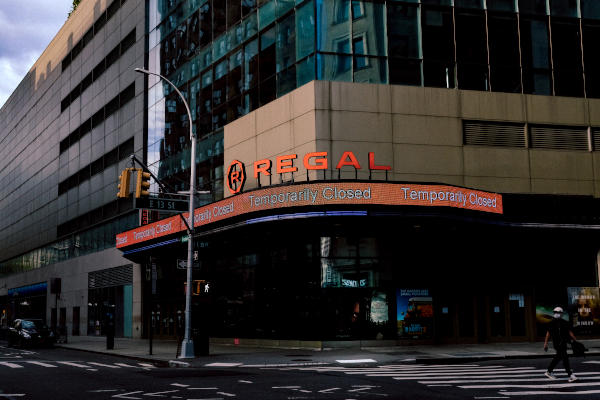
But then there was an explosion on screen. I think it was a bomb going off in an apartment in a tall building. And the laughter stopped.
Afterward, Alley and I shuffled through Union Square amid the dazed people holding missing posters for their friends and family members who’d been in the World Trade Center the morning of the attacks, desperately hoping that their loved ones were out there somewhere, concussed into amnesia, only needing to be found in order to return home.
The air was acrid with chemical embers that night, a smell that would linger for months, and I grabbed Alley’s hand and pulled her close to me as we headed east on 14th Street. Suddenly it started to pour, and as we ran through the puddles on the sidewalk, we started to smile, appreciative and amazed at how the torrent of autumn rain had, for the time being, made it easier to breathe.
The ensuing years were filled with nights at the movies that felt like gifts.
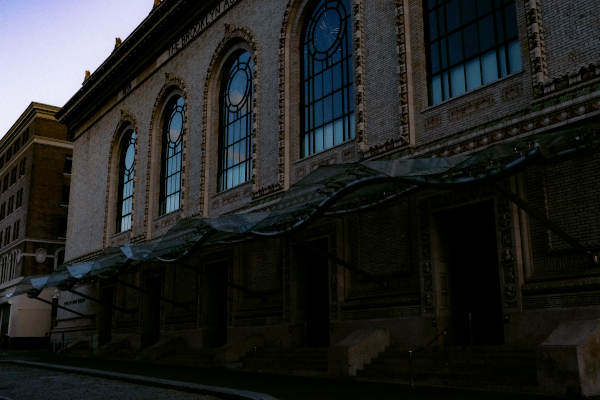
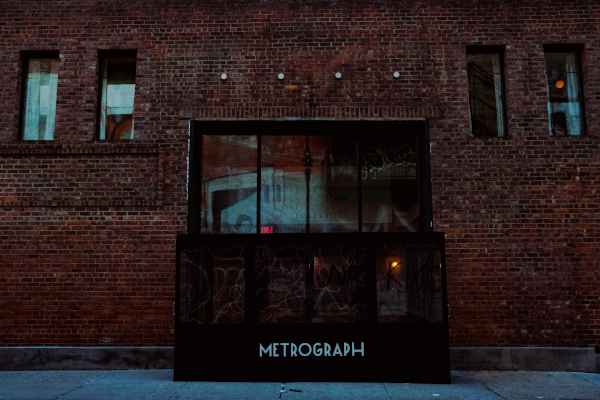
Seeing a 35 mm print of 2001: A Space Odyssey on the last night of 2001 with Sean at the Empire in Times Square. At Cinema Village, recognizing my own struggles dealing with the grief after my mother’s passing while watching Tsai Ming-liang’s What Time Is It There? Finally seeing some of those Wiseman movies like Basic Training and Law and Order at BAM. Taking in Bressons at Film Forum with my movie-loving schoolteacher pal Sam Juliano, who’d bring his prepubescent children into the city from Jersey to experience the work of the French master, and more recently with the great programming at Metrograph, treating myself to 35 mm indulgences of movies I loved as a kid like The Running Man and The Lost Boys.
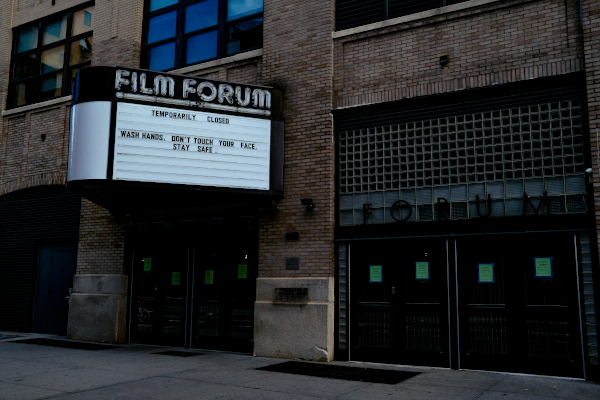
Photographing these theaters, darkened and inaccessible, over the recent months sometimes has felt like a glimpse into a grim future, and friends are misty and monotone when they reminisce about the last movie they saw in a theater. Apparently, there was a wild screening of Surf Nazis Must Die at Nitehawk on the last Thursday before the shutdown. I missed it because I was on vacation with my wife, visiting my in-laws in Hawaii, and since there aren’t any rep houses on Oahu, my last time in a theater was seeing The Way Back.
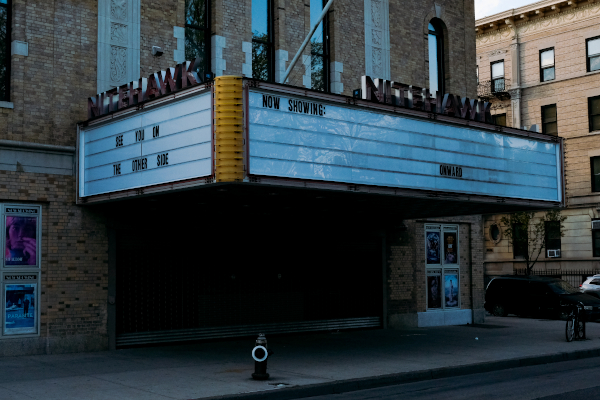
I’d like to say that I expect most, if not all, of these theaters, will reopen. But things have been so turned upside down the past few months, nothing feels certain. All I know is that in my life in New York City, beyond the obviously great elements of the theatrical experience – the commitment to attention, the sense of going through a collective dream with the rest of the audience, that cleansing feeling walking out after dialoguing so intensely with work on the big screen for two hours – watching movies here has offered me the chance to be with my people. That’s why movie theaters, bookstores, venues and record stores are so essential and why I think they will persevere in some form. You need places to go to encounter your kindred spirits, when you have a sense of the person you want to become but are not sure how to get there.
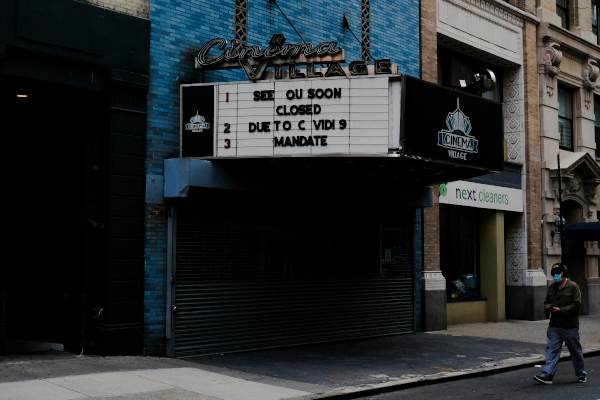
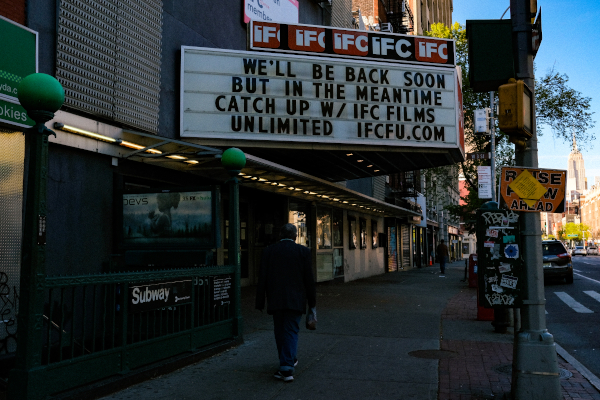
Last year, I was fortunate enough to be invited to see the world premiere of The Irishman at the Walter Reade on the opening night of the New York Film Festival. To me, the Reade is the gem of New York theaters, and showing my work there has been the creative highlight of my life.
Since the gala screening for The Irishman was at Alice Tully, I expected us to just get an introduction from the programmer before the movie started. But as the festival’s director, Kent Jones, concluded his opening remarks, he waved to the back of the theater and beckoned Martin Scorsese to come up to the podium.
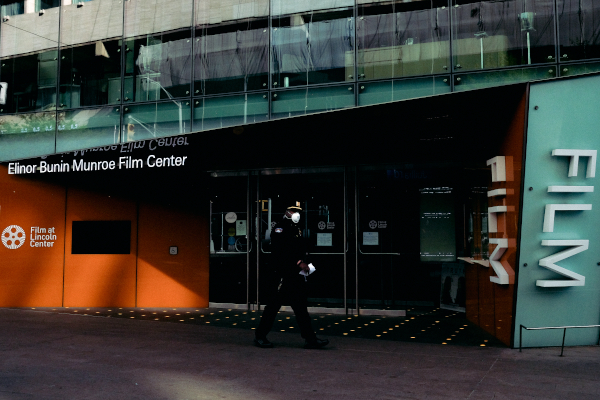
Even though he was in his mid-seventies, Scorsese was spry as he bounced up to the microphone. He cleared his throat. “Great to be here at the New York Film Festival,” he said. “I was here with one of my earlier films in 1973, with Mean Streets, and they haven’t had me back since. It was the same cast then too.”
Scorsese then smiled mischievously and waved toward the back row.
“Bob De Niro, Harvey Keitel, come on up.” Scorsese briefly stepped back to absorb the shocked faces of the audience before leaning forward again and saying, “Joe Pesci, Al Pacino.”
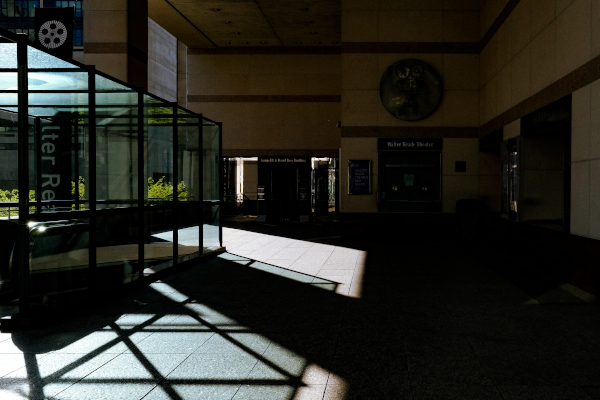
The audience were on their feet, loudly applauding and taking pictures and videos. But I kept my phone where it was, off and in my pocket, and just focused on the moment. What I saw on stage in front of me were a group of five friends, bright with joy at the chance to share their experience of making the film with us.
The ovation continued as the group made their way off the stage, but De Niro lingered behind and made his way back to the podium. He leaned toward the microphone.
“Enjoy the movie,” he said.
All photographs by Jay Giampietro.



